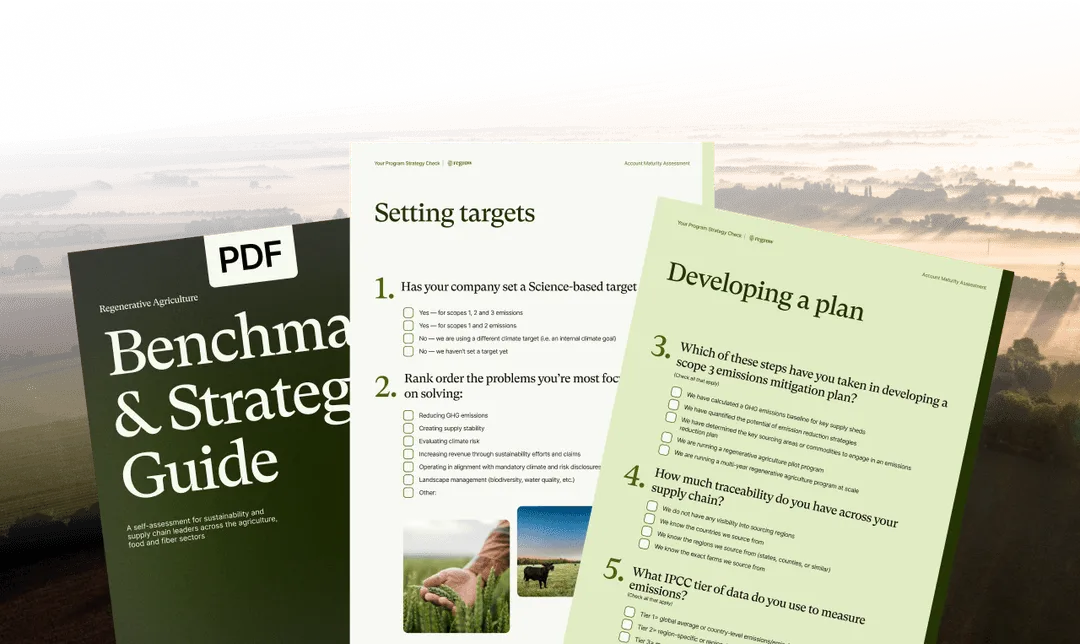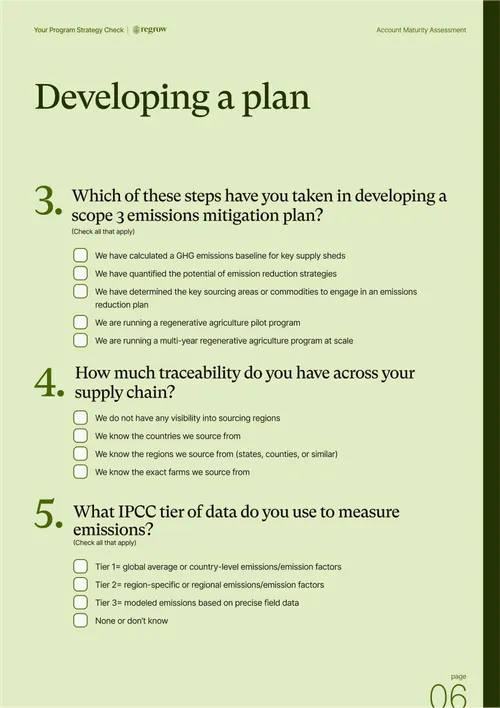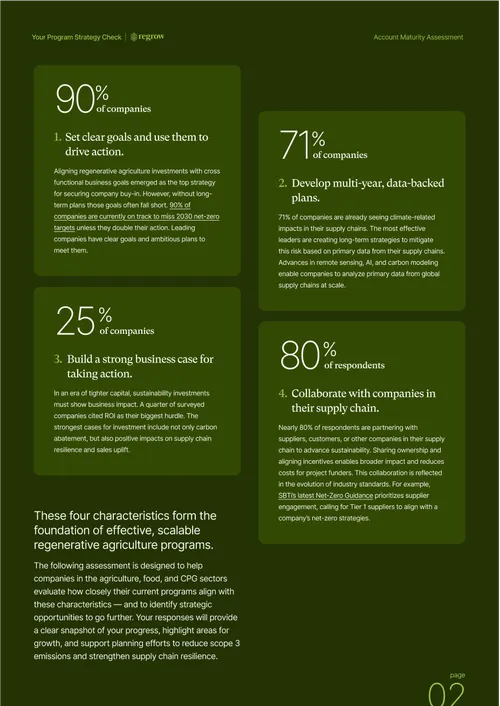
Benchmark & Strategy Guide

A company assessment for sustainability and supply chain leaders across agriculture, food and fiber.
Despite growing awareness and investment in regenerative ag, companies still struggle to build the foundation needed to scale: setting targets, aligning with standards, and measuring real impact.
That’s where this assessment comes in.
Use this guide with your teams to benchmark current efforts, identify areas for improvement, and take the next step toward building a more resilient supply chain.
Gain a better understanding of your regen ag strategy.

Download the Guide:
How to lead in regenerative agriculture
These 4 characteristics of regen ag leaders are drawn from Regrow’s 2025 State of Agriculture Resilience report.
They set clear goals and use them to drive action.
Aligning regenerative agriculture investments with cross functional business goals emerged as the top strategy for securing company buy-in in our State of Ag Resilience survey.
They develop multi-year, data-backed plans
71% of companies are already seeing climate-related impacts in their supply chains. The most effective leaders are creating long-term strategies to mitigate this risk based on primary data from their supply chains.
They build a strong business case for taking action.
In an era of tighter capital, sustainability investments must show business impact. The strongest cases for investment include not only carbon abatement, but also positive impacts on supply chain resilience and sales uplift.
They collaborate with companies in their supply chain.
Nearly 80% of respondents are partnering with suppliers, customers, or other companies in their supply chain to advance sustainability. Sharing ownership and aligning incentives enables broader impact and reduces costs for project funders.


